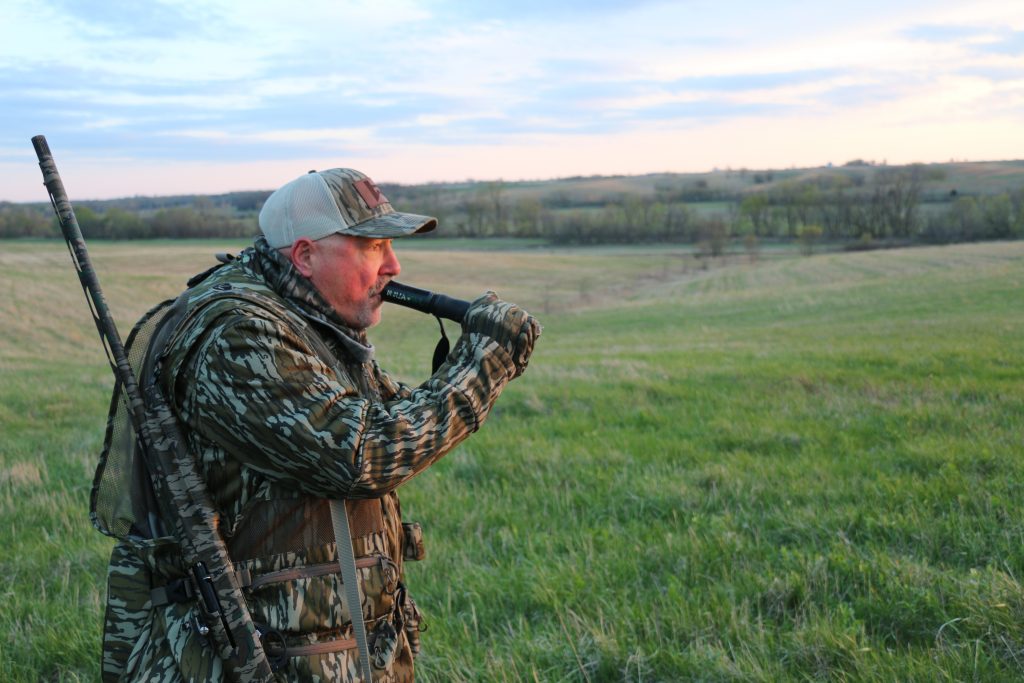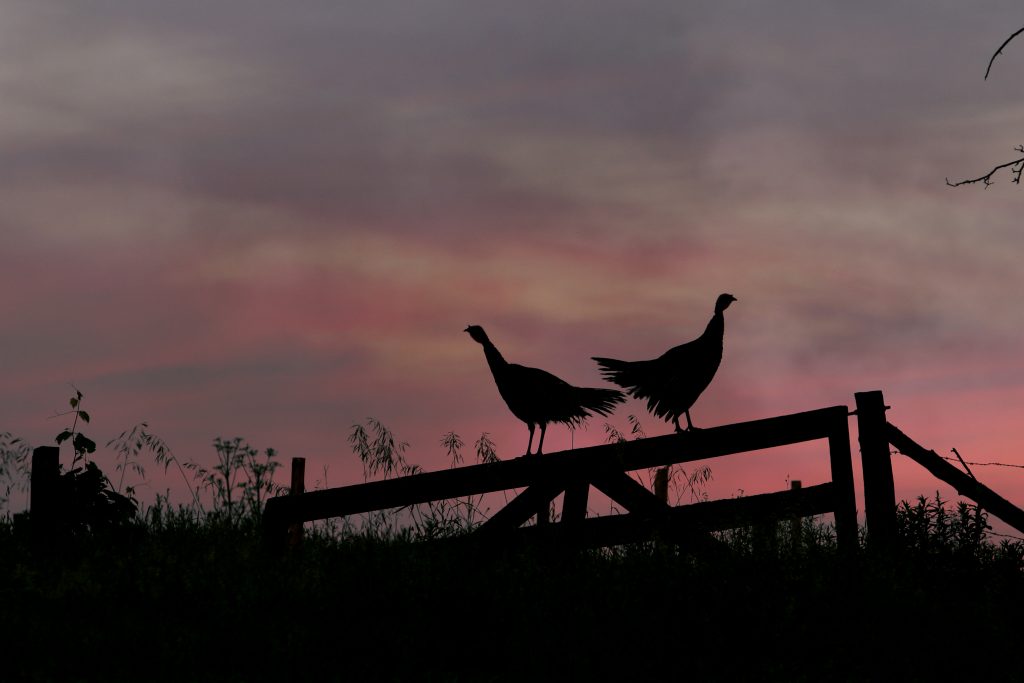The Compromise Plan: Versatility Yields Better Hunting
Using a combination of approaches in specific situations fills more tags long-term than sticking to preconceived notions. A recent Missouri hunt proved it.
Turkey hunters often categorize themselves as aggressive or patient, or mobile or stationary. But really, various approaches work when applied in the right situations.
Finding that versatility is critical for consistent success. The best hunters use a mix of strategies, knowing when to press the issue or back off and wait, or some combination of both. And hard-earned experience usually guides their choices.
That was on full display this past spring, when I joined World champion caller and WoodHaven Custom Calls pro-staffer Steve Stoltz in northern Missouri. With rapidly changing conditions and tough Eastern birds playing hard to get, Stoltz’s adaptability and foresight would be put to the test.
Perfect to Plan
Stoltz and I set out to roost birds the night before our hunt. He dropped me at a property where we’d had success in past years and then drove to a nearby farm where we’d taken a bird the previous spring. I roosted two gobblers, but they were fairly far to the north, and I couldn’t slip close enough to determine their exact location. When Stoltz picked me up later in the dark, however, I knew he was onto something. In fact, I learned that his aggressive roosting had put him almost directly beneath four gobblers. With a perfect setup near the timber by an old cattle gate, we’d be tight on them in the morning.
We began the first day extra early and in full sneak mode. Stoltz reminded me that the turkeys would be very close — probably 70 yards on the limb — so we had to set up in the dark and wait almost motionless until the action commenced. And when the horizon began to glow pink, the birds were right on time, shattering the calm with chain-lightning gobbles as several hens chimed in. Two gobblers were clearly visible in a big oak, strutting and stretching their wings between gobbling.
As turkeys began to fly down, we prepared for quick action. However, instead of pitching to the high-top pasture near us, they glided to a bottom field below the timber. Several hens darted in, feeding here and there, and three longbeards strutted nearby, backlit in the morning light.
Stoltz’s soft calling provoked several gobbles but not much movement, as the gobblers were locked down with the hens. In fact, at one point, the group began drifting away, and I wondered if we might have to move. But then, another gobble echoed through the timber, and a lone bird walked purposefully toward the other turkeys. Stoltz yelped, and the newcomer craned its neck. Then, almost unbelievably, the gobbler made a bee line for us.

The turkey’s course would bring it through a small depression and then right to the gate opening. I adjusted my gun slightly to the right, knowing the shot might be quick. When the gobbler emerged, white head glowing, it assumed an aggressive posture and marched at the decoys. The shot met it there.
Stoltz and I exchanged fist-bumps but didn’t move otherwise, hoping the other turkeys weren’t too spooked and would just ease away, letting us hunt them the next day. When they finally did, we hoisted the heavy 2-year-old and relived a perfect roost hunt.
If You Don’t Like the Weather …
With one turkey in the truck, Stoltz and I shifted focus to the birds I’d halfway roosted the previous night. We slipped into the timber, and a turkey responded fairly quickly. It gobbled at a few calling series and actually moved toward us, seemingly meandering and probably following a hen. But before long, the 1 p.m. closure time arrived. Our roosting attempts that night proved fruitless, so we decided to chase the reluctant turkey on Day 2.
The next morning, joined by friend Nathan Wilt, we crept into that patch of timber, hoping to get close to the gobbler. And the bird gobbled a bit on the roost, far to our north. But as clear skies gave way to clouds and wind began to sway the treetops, the situation dimmed. After a fruitless 90 minutes of trying to work the bird, Stoltz backed out, and we had to find Plan B. With the weather in full gale mode, that seemed daunting. So with just a few hours to hunt, Stoltz pointed the truck toward a farm where we’d found turkeys during previous seasons.
The property is a classic northern Missouri landscape, with acres of open pasture dotted with timbered ditches — beautiful to behold but sometimes tough to hunt. Stoltz and I slipped in carefully, glassing ahead and hoping to avoid bumping unseen turkeys. And when his initial calling sequence produced a gobble in the timber behind us, we figured we were in business.
Stoltz circled to a high-top fence line above the timber, carefully set out some decoys and went to work. The bird responded, too, even moving a bit. But after a while, it became apparent he wouldn’t charge in. In better conditions, we might have backed out and tried to strike a more willing turkey. But with only a couple of hours left to hunt and awful weather, Stoltz decided to wait. The gobbler hadn’t gone anywhere, and we knew from experience that we were set up in an area where turkeys loved to travel.
I’ll admit that sitting and calling sporadically — especially in wet, chilly weather — isn’t my favorite way to hunt. I’m sure Stoltz would, too. But when an unexpected gobble echoed from behind a hill to our right, the situation made sense. Seconds later, a longbeard popped into view and paused to view our setup. And with that, Stoltz filled his tag just before the buzzer, capping an unlikely but thrilling hunt.
Conclusion
Two starkly differing hunts had produced big dividends and a great lesson. A thoughtful, versatile approach — and not giving up, incidentally — will put more turkeys over your shoulder long-term. You won’t always guess correctly, but with experience, hits will soon outnumber misses. And when that results in a great Missouri gobbler during a miserable day, that seems more than worthwhile.
Missouri Turkey Research Addresses Declines

Like other states, Missouri has seen turkey population declines in recent years. The population appears to have stabilized, but biologists there continue to research factors that might affect the state’s No. 1 game bird.
One northern Missouri study, a collaboration between the Missouri Department of Conservation and the University of Missouri, is trying to determine what risk factors or combinations of factors most influence nesting success and poult survival. Factors include weather, predator density, nesting and brood cover characteristics, and insect abundance and diversity.
“These data will be used to better understand the reason turkey populations have seen declines as well as inform management decisions,” said Nick Oakley, wild turkey and ruffed grouse biologist with MDC. Three of four seasons have been completed.
Another study is assessing the turkey harvest rate in southeastern, southwestern and northern Missouri. Researchers are monitoring male turkey band returns in regions that border the Ozarks in southern Missouri and the Glaciated Plain in northern Missouri to assess male harvest rates. Results will be used to better inform a turkey population model that’s being developed. Two of three field seasons have been completed. In addition, the state is working on a fall turkey harvest model update. Researchers will assess the quality of turkey demographic data submitted via the state’s automated telecheck system. Information will be used for the turkey population model. Two of three years of the project have been completed.
